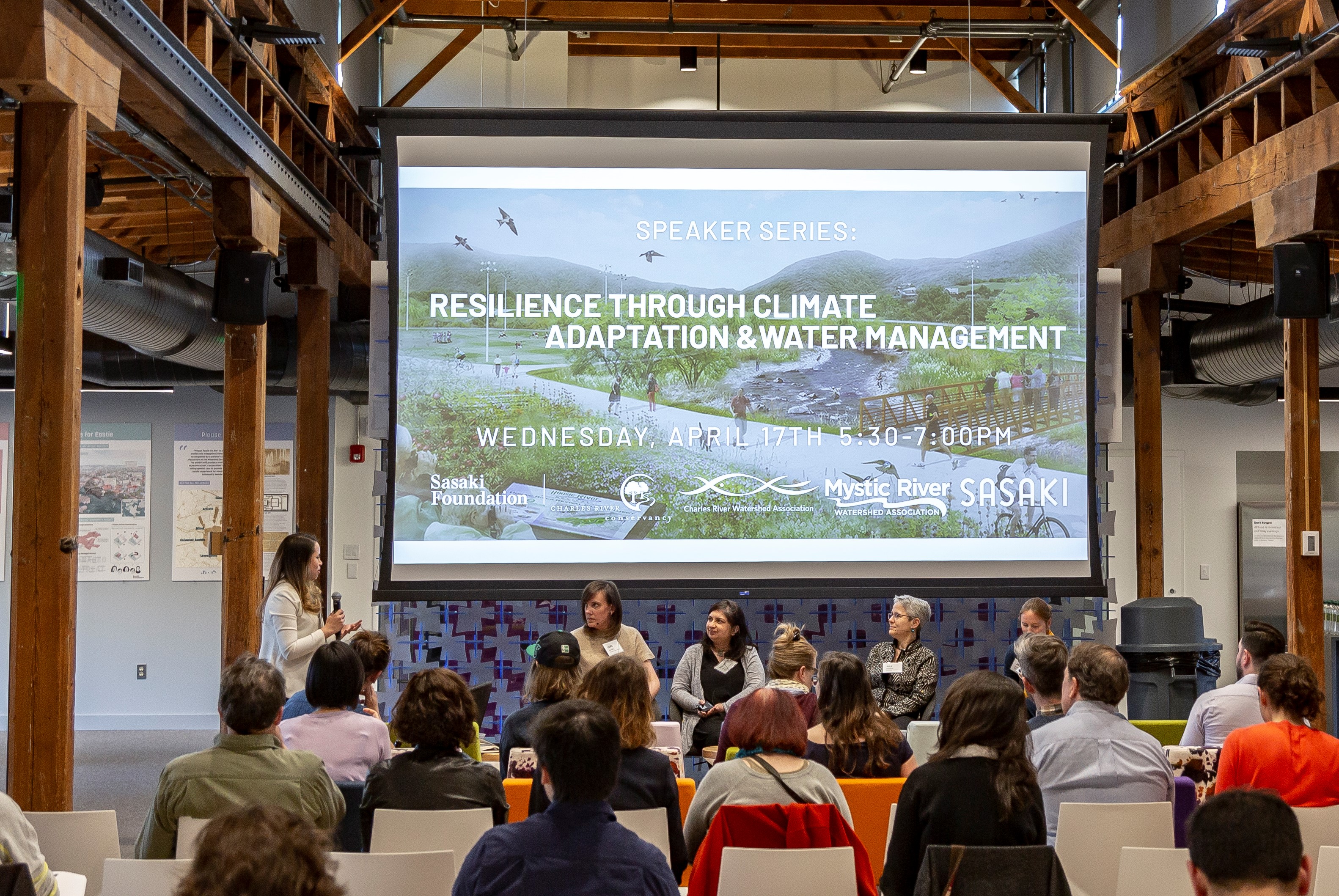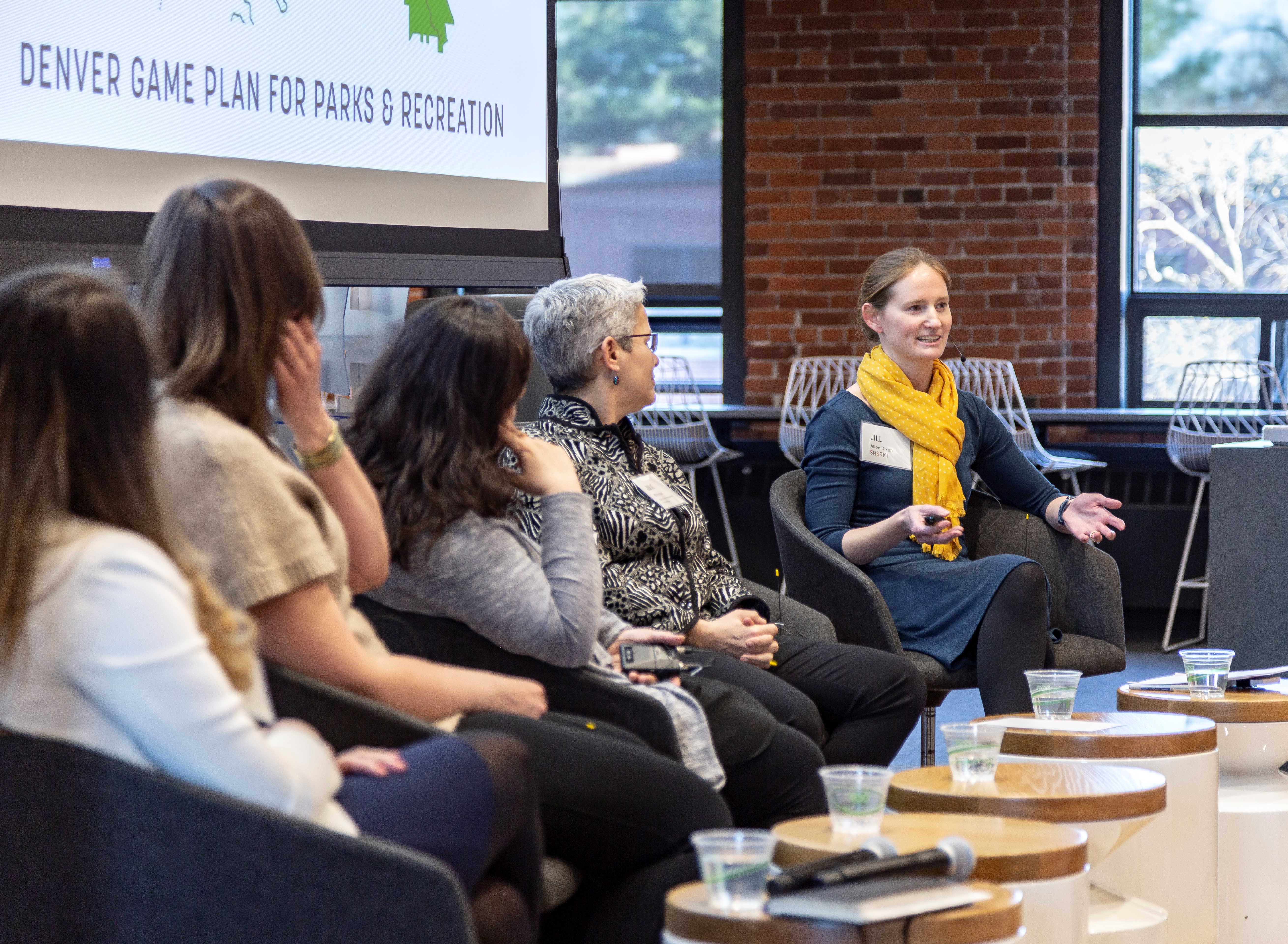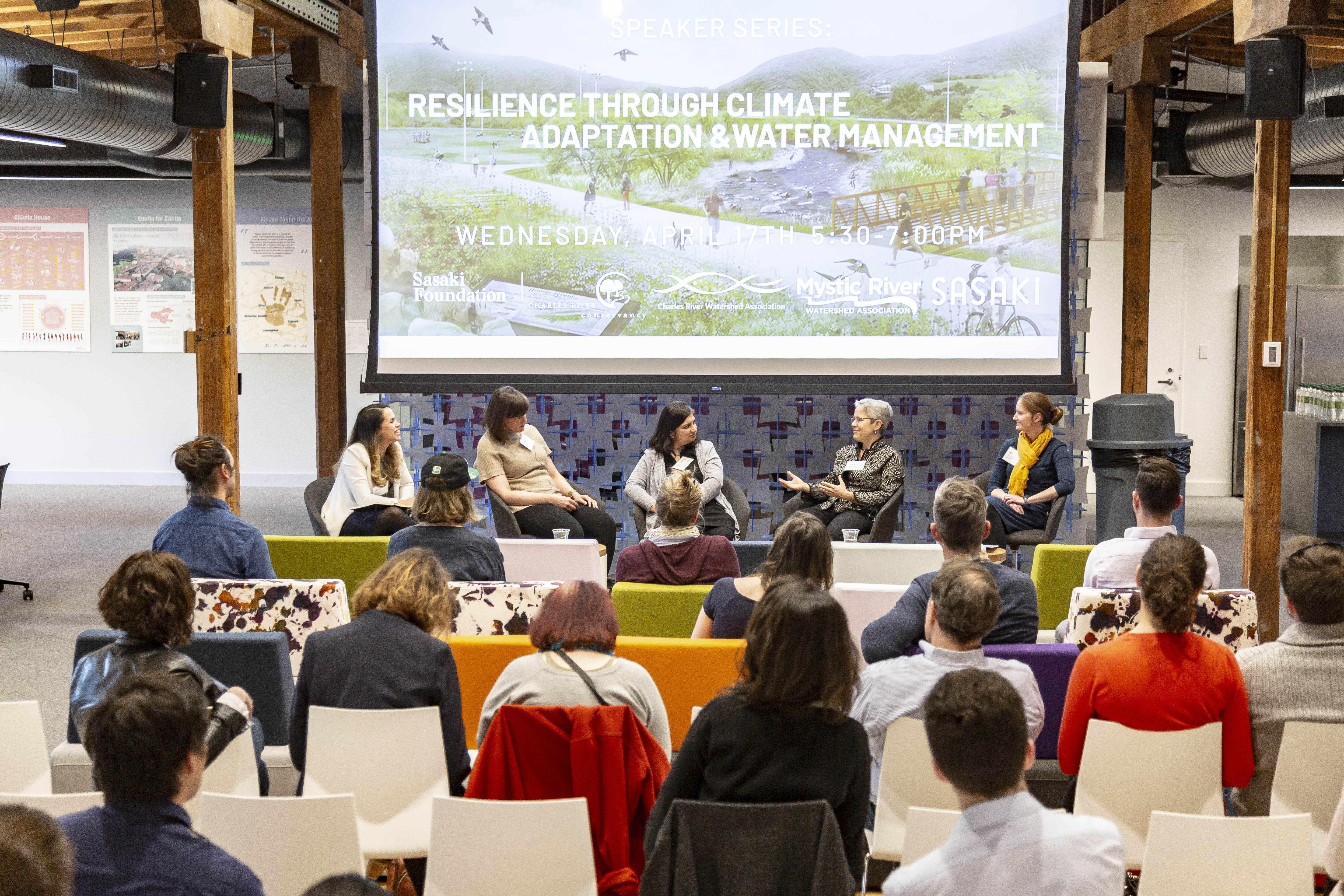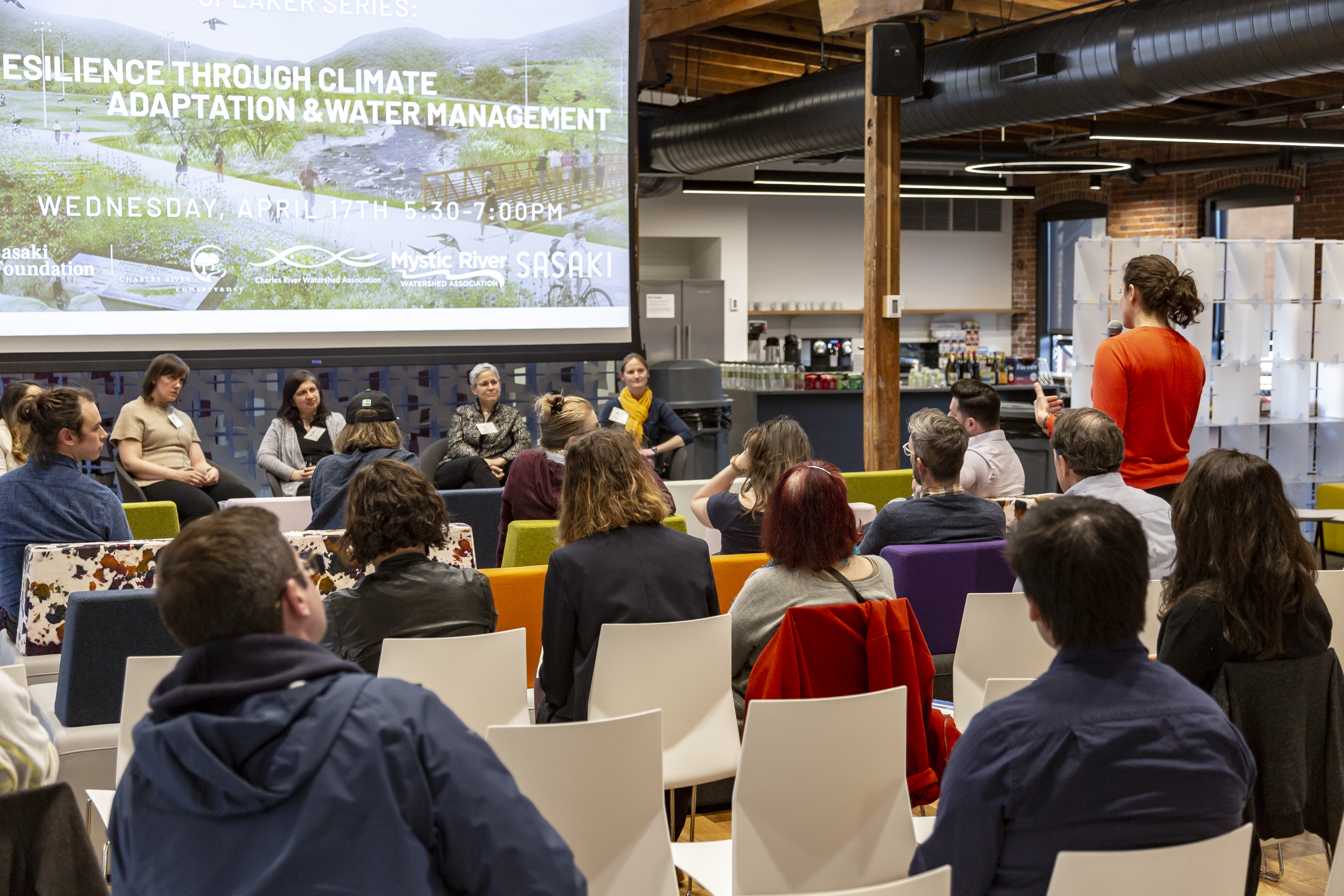May 1, 2019
Resilience Through Climate Adaptation & Water Management
Diana Fernandez and Alicia Deluga (Mosesso)
From addressing rising sea levels to water adaptation during extreme weather events, climate adaptation and water management are at the forefront of resilience planning for many communities across the world. Two weeks ago, the Sasaki Foundation hosted a conversation on proactive approaches to climate adaptation and water management in the greater Boston community. The panel explored how these approaches play an integral role in the natural, built and social fabric of environmental and community resilience building. I had the pleasure of moderating an expert panel comprised of leading female leaders who were addressing these issues and providing insight into the innovative thinking and methods they are deploying make meaningful change.
The following content is a high-level summary of the panelists’ dynamic and thought-provoking discussion on these issues.
Pallavi Mande, Director of Blue Cities for the Charles River Watershed Association (CRWA), discussed how the science behind rivers, lakes and large bodies of water play a role in preservation and advocacy. “Science is a big part of our quintessential existence as an organization. Not only are we carrying out our own science in terms of understanding the river systems using data collection periodically, we also have been engaging our communities. That’s been the key to prioritizing our advocacy efforts both near and long term.” She described how the data CRWA has collected in the last decade is critical for the organization to understand how we can improve moving forward.
Technology is advancing at a rapid pace, and analyzing data retrieved from these technologies can sometimes be overwhelming. How can we navigate through the data we have access to and digest in a meaningful way?
Pallavi’s advice: keep it simple, keep it understandable. “We value science, but making the connection between the work and folks on the other end of the spectrum is critical. Science and technology are important, but they are not everything.”

Panelists and audience, Speaker Series event.

Panelist Jill Allen Dixon, Sasaki.
Laura Jasinski, Executive Director of the Charles River Conservancy, touched on keeping it simple. She described her research project with the Sasaki Foundation, the Charles River floating wetland, and how piloting this idea and this project will end up being a case study for other organizations to learn from mistakes and successes.
There are also many design solutions and new technologies in designing river systems in hopes to affect change. Jill Allen Dixon, senior planner at Sasaki, noted how in the past the notion was to keep water out through levees and other methods. “Now, it’s about how to live with water and design to incorporate water, where multi-prong benefits are the result.”
The restoration or improvement of waterways also creates multi-prong benefits for ecological, social and economic systems. Julie Wormser, Deputy Director of the Mystic River Watershed Association, described how the organization is partnering with social service providers in order to understand how their clients are affected by weather.
“We prepare for climate change, but we experience weather” Julie continues. Ghost citizens — folks who are economically-challenged, in poor health and/or don’t have access to translation services — aren’t able to attend meetings about how weather and ultimately climate change, affect them which has major social and economic effects.
“We are trying to understand the intersections where focused funding or policy change could close the resiliency gap. Boston has proved itself to be a center of excellence for resilient design, but should move toward being the center for excellence around ‘just transition’, or closing the equity gap.”
It was truly amazing to hear this thought is happening at a watershed level. The Hoosic River, a project Sasaki worked on, also sought to achieve multi-benefit solutions. The original approach was to keep the town dry using concrete walls, but over time this approach ultimately cut the community off from the river. The goal was to make the river more of a recreational and environmental resource, and rethinking the traditional flood protection revived the river’s life in many ways; the river, vegetable gardens, centers, etc. all served as places for the community to come together

Panelists and audience, Speaker Series event.

Audience Q&A, Speaker Series event.
We know climate change is coming, but the argument could be made that this notion is not top of mind for some folks. How can we think about building resilience and how can more equitable solutions be surfaced in the discussion of proactive approaches to climate adaptation?
“Maps can show you something before it happens. Because we did so much prep work, we can look at a map and say ‘that’s climate change’ instead of saying ‘that was an act of God’” Julie said. “Because when the latter is said, there are no investments are made. The predictive use of maps is helpful in moving people to move together.”
Laura mentioned that their research project, in addition to the many other initiatives the Conservancy is working on, is to show that there are preemptive data- and community-based solutions to take rather than waiting for disaster to strike and deeming an act of God. She jokingly coined, “help the zooplankton, help the people!”
Often climate adaptation and resilience building focuses on the assets in peril without comprehensively understanding the fragile social and environmental systems that are impacted. This panel of incredibly talented woman explored how addressing these issues can be addressed through multi-benefit systems. The panel’s examples of how these strategies help socially vulnerable communities and how we can leverage science and data to mitigate change, make a clear case for multi-benefit resilience strategies. So next time you come across climate adaptation and water mitigation strategies, make sure to take away some of the brilliant thinking our panelists shared and advocate for resilience planning for our environment, our infrastructure and mostly importantly our people.
